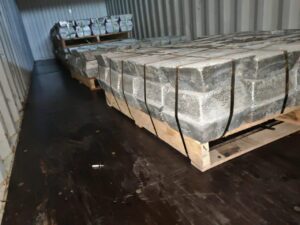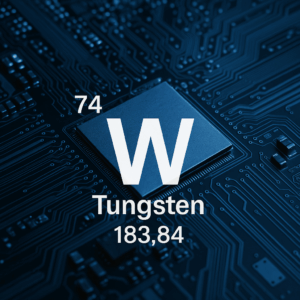When people talk about the metals driving tomorrow’s technologies, copper, lithium, and nickel usually dominate the headlines. But behind the scenes, a quartet of lesser-known elements—scandium, gallium, germanium, tellurium—may quietly be gearing up for their day in the sun.
These are strategic, niche materials—often by-products—and their futures will hinge on supply chain constraints, geopolitical decisions, and selective industrial adoption. If the hype is real, investors and project developers who spot the inflection early could have a leg up.
Scandium: The Lightweight Alloy Bet
Imagine an aircraft or EV chassis that’s lighter, stronger, and easier to weld than today’s aluminum frames. That’s the promise of aluminum-scandium (Al-Sc) alloys—a few tenths of a percent of scandium can boost strength, reduce fatigue, and improve weldability.
Today, global production is tiny—barely tens of tonnes per year. But demand forecasts are more ambitious. NioCorp, for instance, estimates demand could reach 117 tpy by 2026, well beyond current supply. (NioCorp Developments). Even if demand went to 60 tpy, that would be about double the current market. Analysts modeling broad adoption of Al-Sc alloys suggest scenarios of hundreds to low thousands of tonnes by 2030. (ScienceDirect)
On the supply side, scandium’s biggest challenge is that it almost never comes from a dedicated mine. It’s typically recovered as a by-product in titanium, aluminum, or rare earth production. That means supply is sticky—if the host metal projects don’t expand, scandium can’t scale even if prices spike.
Add geopolitics: with China limiting certain mineral exports, Western governments are scrambling to underwrite scandium development in North America and Australia. For example, in 2025 the U.S. DoD awarded $10 m to NioCorp’s Elk Creek project to boost domestic scandium supply. (Reuters)
In short: scandium is still a “call option” on advanced materials adoption—but one with plausible upside if OEMs (auto, aerospace) decide to commit.
Gallium & Germanium: The Dual Semiconductor Sparks
These two elements often travel together in conversation—and in the same boat. Both are critical to high-performance electronics and optics, and both are heavily sourced from Chinese supply chains. But recent policy moves have put them front and center.
Gallium
Gallium is vital in GaN and GaAs semiconductors (power electronics, RF, 5G, LEDs). Demand is rising as efficiency premiums grow in EV chargers, grid inverters, and advanced power modules. (Deloitte)
However, supply is constrained and inelastic. Gallium is recovered as a by-product (mainly of bauxite/alumina processing). Even if demand surges, it’s extremely difficult to turn on new gallium output quickly. According to studies on supply resilience, gallium remains one of the more tightly controlled minerals globally. (ScienceDirect)
The bigger shock has been policy: in December 2024, China banned exports of gallium (and germanium) to the U.S., citing national security concerns. (The Oregon Group – Investment Insights) The move exposed how fragile global supply chains are. The U.SGS estimates that a full dual ban could shave $3.4b in U.S. GDP, concentrated in semiconductor-dependent industries.
Germanium
Germanium finds use in infrared optics, fiber optics, infrared sensors, night vision devices, and specialty electronics. Given its role in defense and high-end photonics, demand is resistant to disruption—but the downside is that substitution is hard.
Production is again largely by-product (often from zinc ores or coal fly ash). Supply is heavily skewed toward China, and export controls in recent years have squeezed non-Chinese markets. (Quest Metals)
In headlines as of 2025: China’s tighter curbs have driven what some traders describe as a “desperate” supply squeeze and record pricing on germanium. (Financial Times)
Because demand is relatively steady (especially from defense), and supply is hard to flex, germanium may be one of the tightest chemical markets in the critical minerals space.
Tellurium: The Solar Wild Card
Tellurium is best known for its role in cadmium telluride (CdTe) thin-film photovoltaics—the technology behind First Solar and a handful of niche modules. If CdTe continues to grow as an alternative to crystalline silicon (to diversify supplier risk or tilt toward high-efficiency PV), tellurium could be in the spotlight.
Metal-supply constraints bite here too: over 90% of tellurium is recovered as a by-product of copper refining (from anode slimes). That means tellurium supply is indirectly tied to copper demand and refining economics—not directly to tellurium price signals.
Recent policy shifts make tellurium more interesting. In early 2025, China announced export controls including tellurium as one of five restricted critical minerals.
From a growth perspective, an oft-cited academic framework suggests: if CdTe PV growth surpasses a few percent share globally, required tellurium production rates would exceed historical growth ceilings for many metals.
Thus, tellurium is especially vulnerable to “episodic tightness.” If a new CdTe plant gets built or modular scale jumps faster than expected, the supply system may struggle to respond.
What to Watch: Cast Lines Where the Tension Is
- Export control moves & trade policy
The greatest near-term driver for gallium, germanium, and tellurium may be policy, not fundamentals. Watch Chinese licensing changes, U.S. CHIPS / defense funding, and EU raw materials regulation (e.g. the EU Critical Raw Materials Act). - Anchor customers & adoption commitments
For scandium, it’s a question of whether OEMs adopt Al-Sc at scale. For gallium/germanium, whether major chip or defense firms will commit to multi-year offtakes outside China. For tellurium, whether CdTe capacity expands beyond current players. - Upstream project execution & secondary supply sources
A few new scandium recovery plants or zinc/coal plants capturing extra germanium could shift marginal supply curves. Also, advances in recycling or extraction from unconventional sources (fly ash, slags) may matter. - Volatility & arbitrage windows
Because these are small markets, sudden shortfalls or announcements may cause sharp price gyrations. That’s an opportunity if you’re on the inside of deal flow.
Final Word
If there’s a hidden “sleeper bet” in critical minerals, it’s not lithium or cobalt—those stories are well told. The real tension is building in niche spaces where supply is brittle, adoption is optional, and policy can tip the balance.
- Scandium remains speculative, but with upside if alloy design shifts.
- Gallium is already navigating the border of policy and demand, making it a prime near-term story.
- Germanium may lead in tightest supply discipline, backed by defense demand.
- Tellurium is the “swing” metal: not always exciting, but capable of surprise when solar bets shift.





